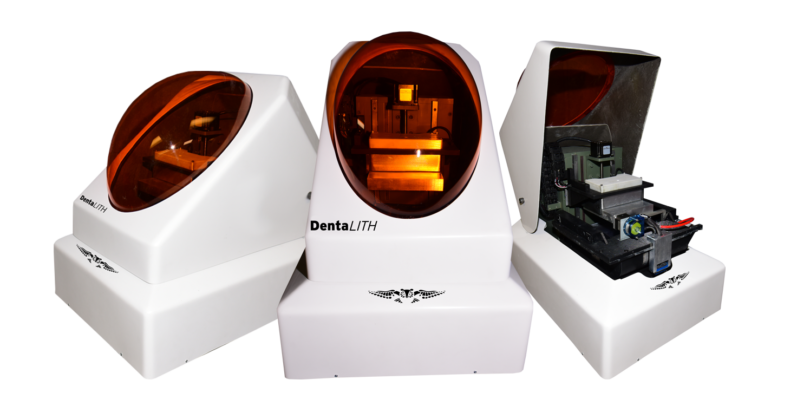A Hampton Roads-based company is the latest to jump on the 3-D printer bandwagon by creating a high-tech device to be used in dental offices to speed up the time it takes to make custom crowns and bridges.
Old World Labs has been making 3-D printers for use in academic research and development labs for the past five years, according to its founder and CEO, Nick Liverman.
The company’s latest printer, expected to hit the mass market later this year, is called DentaLITH. Liverman hopes the printer will revolutionize the way dental offices and labs manufacture ceramic crowns and bridges, as well as acrylic-based surgical guides, corrective alignments and night guards.
The art of 3-D printing is used in all kinds of industries, from architecture to aeronautics to robotics. It is being used with increasing frequency in the medical field to create everything from prosthetics to replicates of bones. More than $4 billion in prosthetic, orthodontic and other dental parts are made each year. In fact, a recent report by SmarTech Publishing found that the dental industry continues to be one of the strongest targets for development of new 3-D printers, materials and applications.
In plain terms, 3-D printing is the process of making a physical object from a three-dimensional digital model, typically by laying down many thin layers of a material in succession. Old World Labs focuses on additive manufacturing, which is computer-driven, using information from 3-D digital scans to create 3-D objects layer by layer.
For use in a dental office, think of it this way: If you need a mouth guard, you no longer have to get a gooey impression made and then wait weeks for the device to be made. Rather, a dentist can take a digital scan of your teeth and send the file right to a 3-D printer.
“It’s a huge thing in the dental field that’s come to be in the past couple of years,” says Liverman.
The DentaLITH printer uses resin composite and ceramics for its devices. Because the prints do have to harden in a furnace, there’s about a one-day turnaround. But it’s vastly faster than the old way.
Liverman was a self-described hobby robot-maker who taught himself how to make a 3-D printer after beginning with a kit and tweaking it to his liking. He started his business out of a Virginia Beach storage unit in 2012. As the company grew, he partnered with Industrial Automation Specialists Corp., which helps make the equipment he designs. They operate out of a facility at the Langley Research and Development Park in Hampton.
Liverman’s company was working on advanced materials for semiconductors for space exploration when a customer approached him and asked him to adapt the technology for dental work. So they did. He has collaborated with Virginia Beach dentist Eric Hosek on various aspects of the development.
Liverman intends to introduce DentaLITH at the International Dental Show in Cologne, Germany, this spring, followed by commercial production overseas. He hopes to obtain U.S. Food and Drug Administration clearance for ceramic crowns and bridges later this year so he can then market the printer in America. He envisions 3-D printers such as DentaLITH eventually bringing down the costs of expensive dental devices. Not only will the printer consolidate the equipment in a dental lab, it will shorten the time it takes to make the devices.
“It’s definitely going to reduce the cost of health care, once the market is saturated with these,” Liverman said. “It’s something that can have a lot of impact around the world.”


